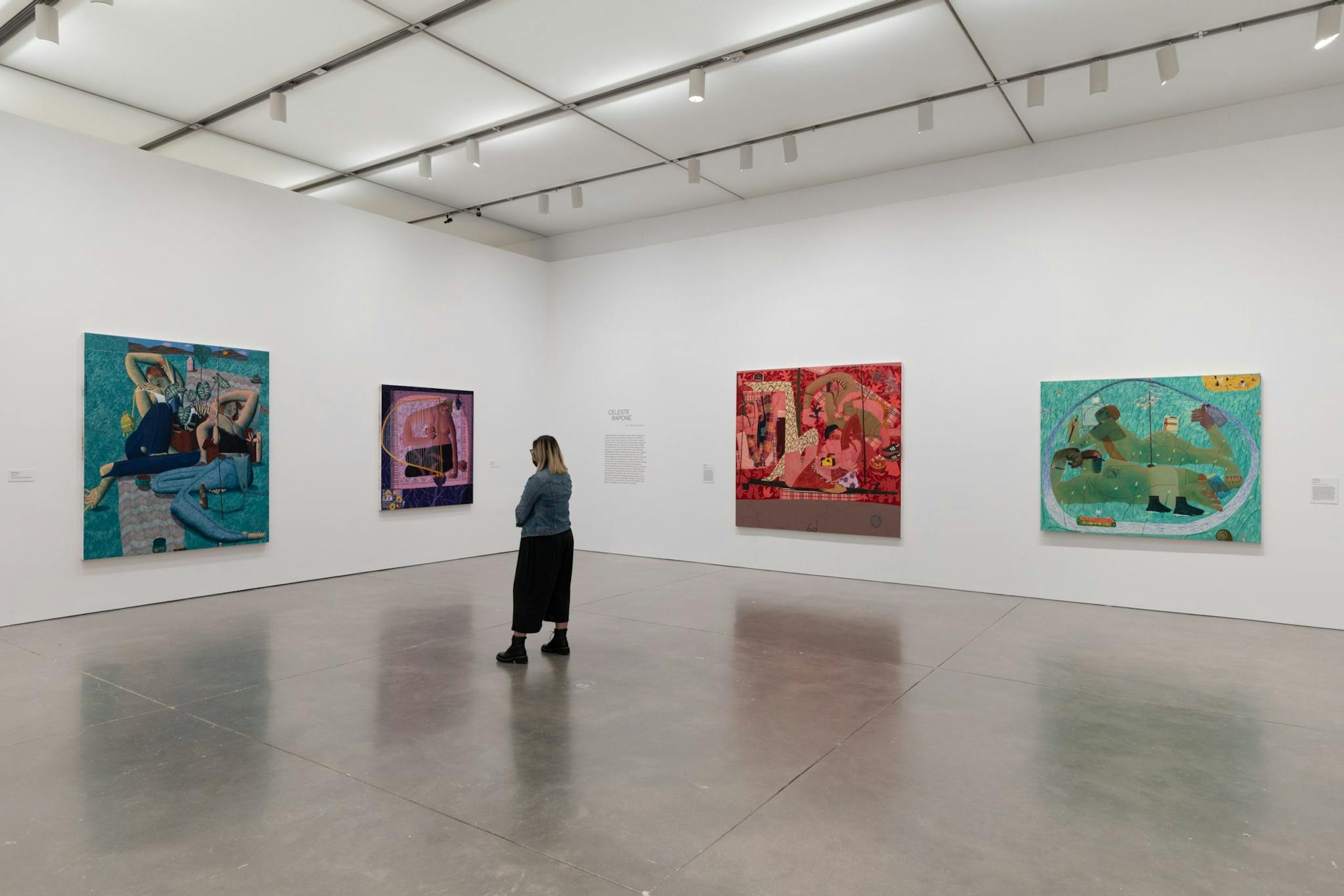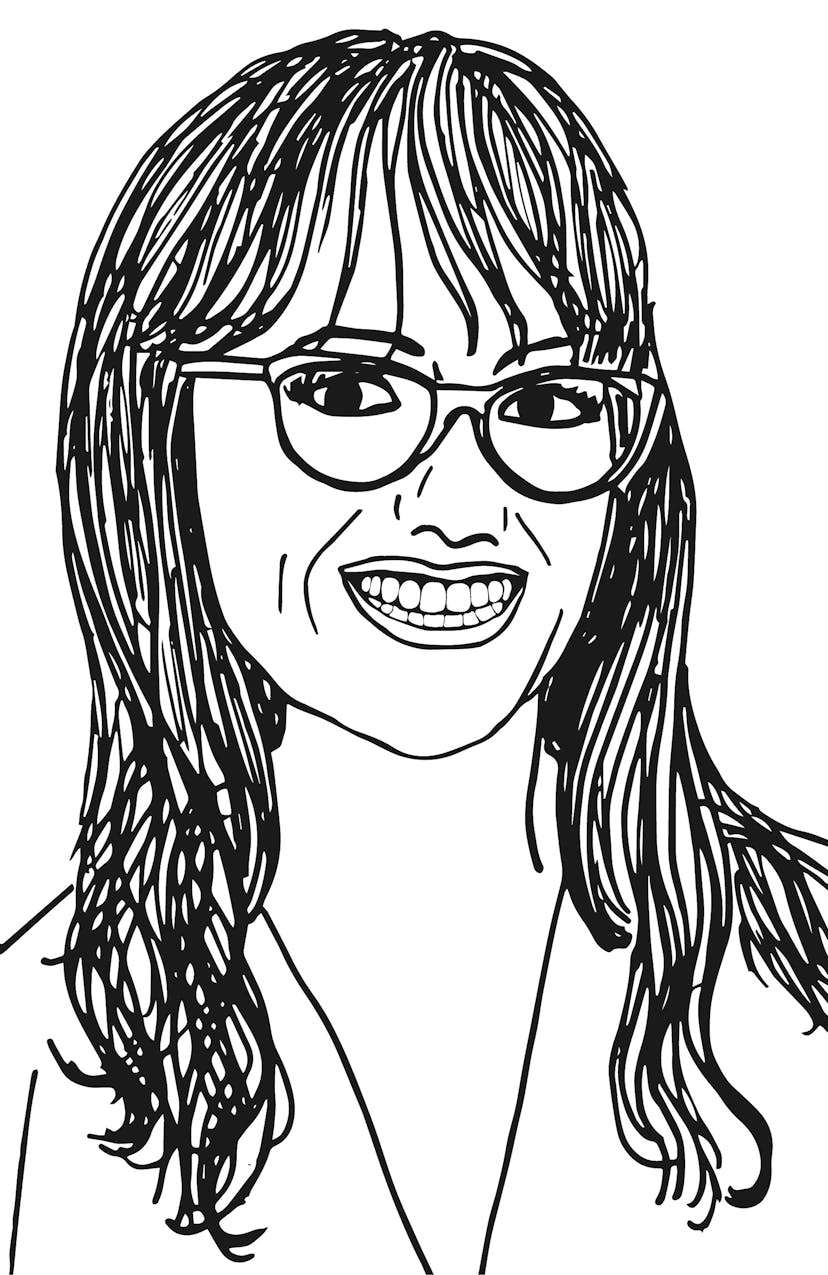Who gets to be the subject of a painting? Portraiture was historically the purview of the powerful—wealthy patrons who could afford to have their faces preserved for posterity and commission likenesses of their nearest and dearest. Models, meanwhile, were often anonymous and hired to play roles in artists’ imaginings that had little to do with their actual lives. Dead white dudes and nameless nudes still dominate many museum walls, but those dynamics have changed with time. Consider Alice Neel, who created unflinching yet empathetic portraits of artists and activists, mothers and children, and her Harlem neighbors during the midcentury’s era of ascendant abstraction and went overlooked until late in her career. Last year, Neel’s blockbuster retrospective at the Met drew big crowds, and nearly four decades after her death, her personal approach to portraiture feels of the moment amid a revival in figurative painting that’s continuing to broaden the spectrum of stories represented in representational art.
The current renaissance has captivated curator Ruth Erickson, who sees the upswing being propelled by younger queer, BIPOC, and women artists depicting themselves and their families, friends, and lovers, as well as other members of their communities, drawing on the details of their everyday lives in imaginative ways. In response, she and curatorial assistant Anni Pullagura have organized “A Place for Me: Figurative Painting Now,” an exhibition on view at the Institute of Contemporary Art / Boston through September 5. The show strains a bit under the weight of that decisive subtitle—with 38 paintings by eight artists, it feels more like a small slice of the current moment. But it’s one worth savoring, full of flavor and reflecting a diverse range of subjects, styles, and strategies.
The exhibition opens with canyoustaywithmetonight_causeyouarehere,youarehere,andweareherewithyou (2021) by David Antonio Cruz, the show’s lone Boston-based artist. It’s a painting from a recent series in which Cruz explores bonds in queer communities of color by tapping someone in his circle to gather members of their chosen family and pose for a group portrait, a maneuver that feels all the more poignant (and perhaps perilous) in a time of pandemic. For this work, Cruz captured his friend Sheldon, a fellow artist, with eight others in his orbit. Clad in brightly patterned clothing of their own choosing, the nine figures form a pyramidal pile, lounging on two couches and spilling onto the floor below. Some sitters may know each other; others may be connected only through the initial subject. But they are intimately posed, each individual touching another. Indeed, at times it’s difficult to tell where one body ends and the next begins. I found myself trying to trace each hand to its owner, an impulse heightened by the artist’s choice to render three of those hands in an unnatural aqua hue, a motif that recurs in several other works.
That’s hardly the exhibition’s only anatomical anomaly. The second gallery pairs two artists whose styles could each be called gently Cubist, but with very different results. Louis Fratino, known for his explorations of queerness in everyday life, bends and blends bodies in Sleeping on your roof in August (2020). Painted from a memory of a summer night with his boyfriend, it shows the two lovers so cozily entwined that even their toes interlock. Less comfortable-looking are the contortions of Celeste Rapone’s mostly female figures, placed in impossible positions and trying their darnedest anyway. One of the three friends in Pack Animals (2021) manages to snap a selfie while thrusting a thigh-high crocodile boot in the air and holding a cigarette behind her back, a funny evocation of the sometimes painful posturing of late adolescence.
Actual pack animals appear in the next room in Ambera Wellmann’s Orbit (2022), though you might not realize it from a first glance at the chaotic, almost apocalyptic scene in the center of the canvas, at least until the violence shades into play. (Wellmann was among the many who adopted a canine companion during the pandemic, and this painting was inspired by a trip to a dog park.) Looking on at the fracas from the margins are wittily rendered faces from Wellmann’s artistic community. While the other featured artists have anywhere from four to seven paintings on view, this is Wellmann’s only piece in the exhibition, and though it is the show’s largest work at eleven by seventeen feet, I’d still like to have seen more. Including just a single painting put some pressure on it. What does it mean to depict a day at the dog park with such sturm and drang and at the gargantuan scale of history painting? Without more context, I’m not quite sure—but then again, I’m a cat person.
The rest of that gallery is filled with lush paintings by Doron Langberg, a consummate colorist. High-octane hues fuel Bather (2021), which has Langberg casting his husband in a gender-flipped spin on Pierre Bonnard’s nudes and setting the bathroom ablaze with scarlet and magenta. Sleeping 1 (2020) similarly riffs on a familiar art history trope, the reclining nude, using a prismatic palette that’s subtler though no less stunning. Color is key, too, for Arcmanoro Niles, who employs vivid backgrounds and burnishes Black skin to a glowing gold to better capture the depth of his loved ones’ complexions on canvas. Hot-pink nipples and pastel glittered hair also add to the dream-like intensity of his self-portrait I Look Just Like My Mama With My Father’s Eyes (Can Time Heal The Guilty) (2020), bringing a touch of the uncanny to the familiar domestic space of his kitchen. Appearing between Langberg’s and Niles’s works, Aubrey Levinthal’s quieter, melancholy canvases feel like palate (or palette?) cleansers, but here too are expressive twists: the unexpected perspective in the pandemic self-portrait Bed (April) (2020), the unsettling shape and scale of the hand cradling her infant child in Morning Song (For S.P.) (2020).
In the final room, Gisela McDaniel eschews two-dimensional portraits, literally and figuratively, by augmenting her paintings with audio and assemblage. Often working with women and nonbinary people of color who are fellow survivors of sexual violence, she enlists her subjects as collaborators, giving sitters a say in how their bodies will be portrayed. Each project begins with a long recorded conversation, and the subject’s voice plays in the room with the resulting painting. McDaniel also invites her subjects to contribute objects that are meaningful to them—the friend depicted in Sunset over 8 mile (2021), a musician, even brought pieces of a cello. McDaniel incorporates such items into the work, where they might sit atop or drip off the canvas. Some of the assemblage elements seem more integrated than others, but McDaniel’s thoughtful approach to the artist-subject relationship pays off: The paintings are arresting, alive, and their subjects look as heroic as any guy on a horse. Her work, like Neel’s, suggests that portraiture is always a social practice, in one way or another. And like so much of the art in this exhibition, it makes the case that in a time in which we are inundated by images, a painting made with care—with love—can still shape our ideas of beauty, of strength, and of who and what is owed our attention.
“A Place for Me: Figurative Painting Now” is on view at the ICA through September 5, 2022.




